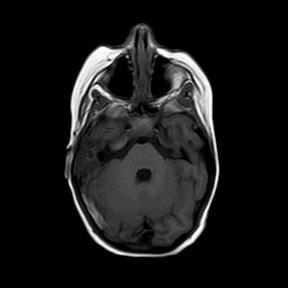Cerebral venous sinus thrombosis CT
|
Cerebral venous sinus thrombosis Microchapters |
|
Differentiating Cerebral venous sinus thrombosis from other Diseases |
|---|
|
Diagnosis |
|
Treatment |
|
Case Studies |
|
Cerebral venous sinus thrombosis CT On the Web |
|
American Roentgen Ray Society Images of Cerebral venous sinus thrombosis CT |
|
Directions to Hospitals Treating Cerebral venous sinus thrombosis |
|
Risk calculators and risk factors for Cerebral venous sinus thrombosis CT |
Editor-In-Chief: C. Michael Gibson, M.S., M.D. [1]; Associate Editor(s)-in-Chief: Kalsang Dolma, M.B.B.S.[2] Sharmi Biswas, M.B.B.S
Overview
CT scans of brain findings are helpful to diagnose cerebral venous sinus thrombosis.
CT Scan
- Cerebral edema and venous infarction are commonly seen. [1]
- In unenhanced CT scan, hyperattenuating signal is found in occluded sinuses which is a classic finding of cerebral venous thrombosis, but only found in 25% of cases.
- In patients with dehydration, an elevated hematocrit level, or a subjacent subarachnoid hemorrhage or subdural hematoma, increased attenuation in the venous sinuses.

Transverse sinus thrombosis

CT venography
For the detection of the thrombus itself, the most commonly used tests are computed tomography (CT) and magnetic resonance imaging (MRI), both using various types of radiocontrast to perform a venogram. Computed tomography, with radiocontrast in the venous phase (CT venography or CTV), has a detection rate that in some regards exceeds that of MRI. The test involves injection into a vein (usually in the arm) of a radioopaque substance, and time is allowed for the bloodstream to carry it to the cerebral veins - at which point the scan is performed. It has a sensitivity of 75-100% (it detects 75-100% of all clots present), and a specificity of 81-100% (it would be incorrectly positive in 0-19%). In the first two weeks, the "empty delta sign" may be observed (in later stages, this sign may disappear). To detect thrombus, CT and MRI are most commonly used. CT with radiocontrast in the venous phase (CT venography or CTV), is more efficacious in detecting thrombus than MRI.
Cerebral angiography
Cerebral angiography may demonstrate smaller clots, which can be found as "corkscrew appearance".
Direct cerebral venography
Contrast material is inserted directly into the dural sinus or cerebral vein via the internal jugular vein. Intraluminal thrombosis presents as a filling defect though there is a non-occlusive thrombus while complete non-filling defect in presence of an occlusive thrombus. Complete thrombosis may present as a 'cupping appearance'. During direct cerebral venography, venous pressure can be measured to detect venous hypertension. In CVT , venous hypertension is evident due to the parenchymal change caused by the thrombosis.[1][2]
References
- ↑ 1.0 1.1 Saposnik, Gustavo; Barinagarrementeria, Fernando; Brown, Robert D.; Bushnell, Cheryl D.; Cucchiara, Brett; Cushman, Mary; deVeber, Gabrielle; Ferro, Jose M.; Tsai, Fong Y. (2011). "Diagnosis and Management of Cerebral Venous Thrombosis". Stroke. 42 (4): 1158–1192. doi:10.1161/STR.0b013e31820a8364. ISSN 0039-2499.
- ↑ Faiz, Kashif Waqar; Vetvik, Kjersti Grøtta; Harper, Charlotte Elena; Kristoffersen, Espen Saxhaug (2018). "Cerebral venetrombose – forekomst, diagnostikk og behandling". Tidsskrift for Den norske legeforening. doi:10.4045/tidsskr.17.1047. ISSN 0029-2001.